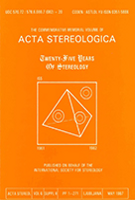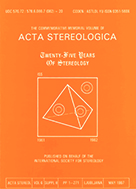- Accueil
- Volume 10 (1991)
- Number 1 - Stermat '90 (part I) - June 1991
- Effectiveness of steel wire reinforcement in a boundary layer of concrete
Visualisation(s): 567 (33 ULiège)
Téléchargement(s): 122 (1 ULiège)
Effectiveness of steel wire reinforcement in a boundary layer of concrete

Abstract
External surfaces, such as those of the mold, exert influences on the orientation distribution of wires in concrete. Part of the influences is due to compaction leading to wire segregation in the mix. The influence is restricted to a boundary zone with a thickness of the same order of magnitude as wire length, i.e. about 50 to 60 mm. Experiments have revealed this zone mostly to be under-reinforced, while it only extended over about 50% of wire length.
Based on the concept of a partially-planar wire dispersion in bulk of the material, estimates are derived for orthogonal components of the reinforcement ratio (number of wires per unit of area, NA) and of the tensile strength of the composite. To that end, wires violating the boundary conditions are not replaced in the model. The structural information is of a quasi-local nature, since properties are presented as a function of the depth under the surface.
Estimates for the reinforcement ratio of a boundary layer with a thickness of half the wire length correspond well to quantitative image analysis results obtained on about 300 section images of steel wire reinforced concrete (SWRC) containing volume fractions of wire varying between 0.5 and 3%. Similar data also resulted from a computer-simulation approach.






